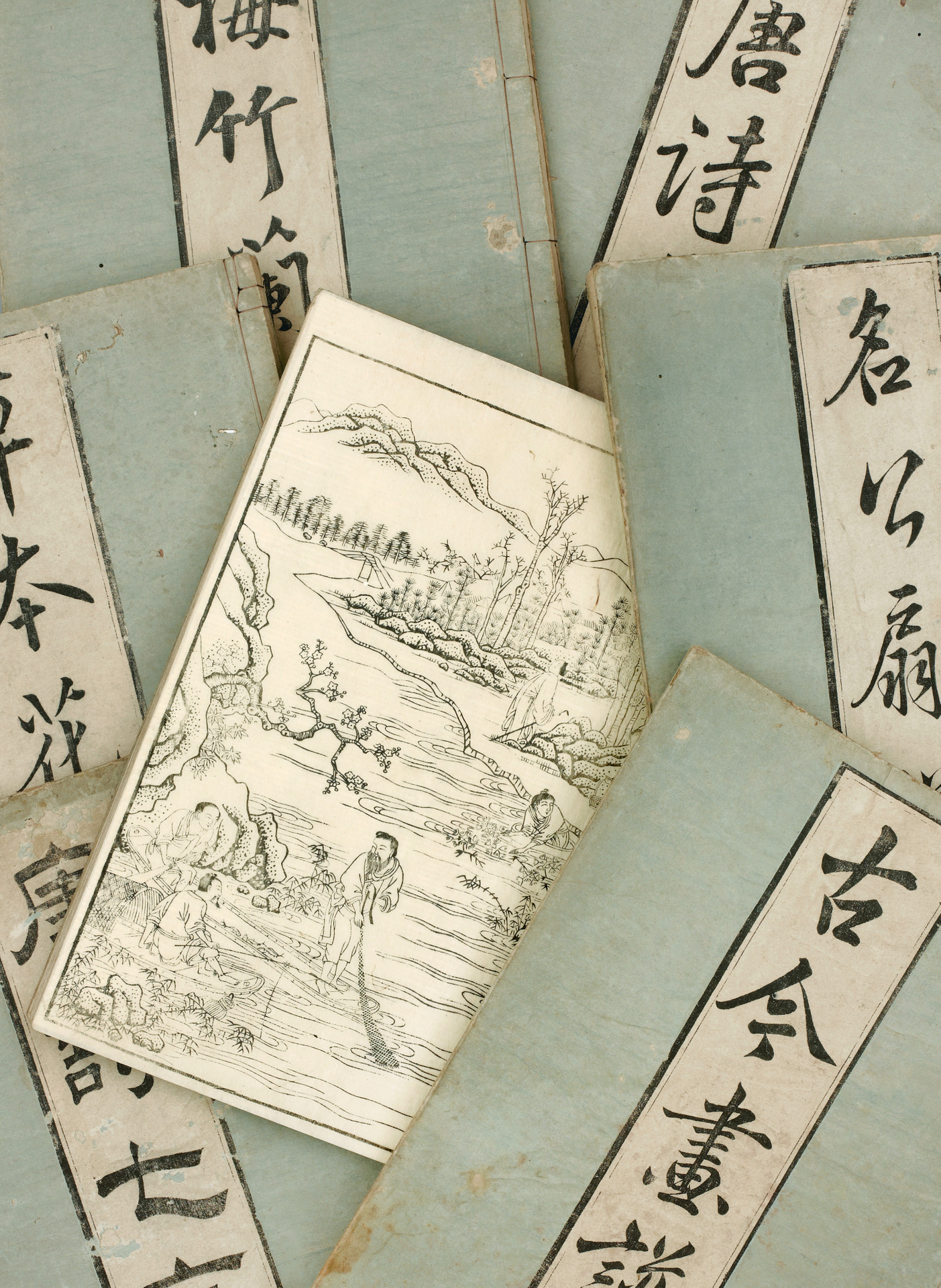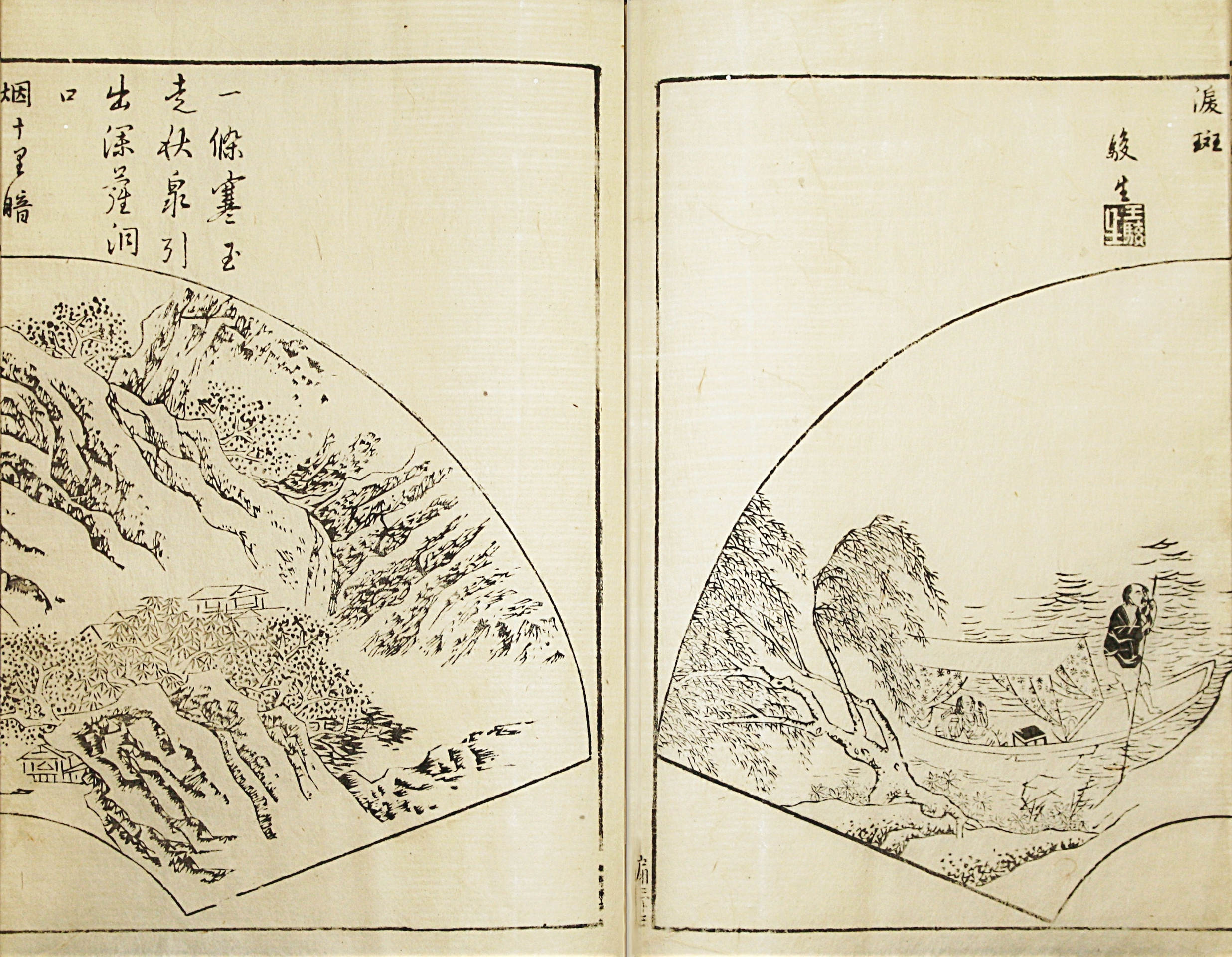Kyôto, Yamamoto Tôhee, Hôei 7 (1710).
8 volumes 4to [282 x 203 mm] printed on mulberry paper, preserved in the original blue wrappers sewed in the Chinese manner, titles artistically calligraphed on a beige background in the center of the covers. 1 volume lacks the lettering piece, small minor wormholes in the margins. Preserved in a modern case in midnight blue cloth.
Rare complete copy of the famous “Hasshu Gafu”, the most bêutiful illustrated book from the Ming Dynasty (1368-1644).
It’s the second Japanese edition, the first Chinese one, published in 1621-1628 being unobtainable. The Chinese edition was imported to Japan and a first Japanese edition was published in 1672.
This compilation of 8 independent works was published by different authors and artists.
The 3 volumes of the Toshi Gogon, the Toshi Rokugon and the Toshi Shichigon contain the most admirable texts from the most famous poets of the Chinese culture’s pêk under the Tang dynasty (618-907): the poems of Du Fu (712-770), Li Bai (701-762) or also Bai Ju Yi (772-846) embellish these pages.
Each of the 8 volumes is abundantly illustrated with full-page woodcuts executed by various Chinese artists.
The 8 distinct parts are: the Toshi Gogon with 50 Tang poems and their representations of contemporary everyday scenes, with a precise evocation of the mêns of transportation used at the time, of the furniture present in private homes, or also of the leisure the populations indulged in, the Sohon Kashi with 45 poems and illustrations of floral plants, the Mokuhon Kacho with 44 illustrations of trees, flowers and birds, the Meiko Senfu with 48 double-page illustrations of fan-paintings, the Baichiku Rangiku with 102 illustrations of bamboos, orchids, chrysanthemums, the Kokon Gafu with 47 paintings illustrating the everyday life under the Tangs and the Yuans, with fishing parties, characters in their homes, a group of musicians, etc., the Toshi Rokugon with 40 paintings illustrating the everyday life and the Toshi Shichigon illustrated with 50 engravings.
These 426 plates that are inspired from the work of famous Chinese painters are of particular interest as they inform us on the way of life, the architecture and the furniture, and also the costumes of the Chinese people from the VIIth to the XIVth century.
The “Hasshu Gafu” is considered as the first grêt illustrated source on Chinese painting for Japanese artists.
« This work was of seminal importance for its influence on Japanese artists of the ‘nanga’ and Kano schools in the late-17th and 18th centuries » (Gardner).
The painters of the nanga school such as Gion Nankai (1677-1751), Yanagisawa Kien (1706-1758) and Ike no Taiga (1723-1776) drew their inspiration from this work, copying both its compositions and the techniques used.
A very fresh copy of this superb abundantly illustrated work, rarely found complete with its 8 volumes, preserved in its original wrappers in perfect condition.
The B.n.F. only possesses 3 of the 8 volumes of this second Japanese edition.











